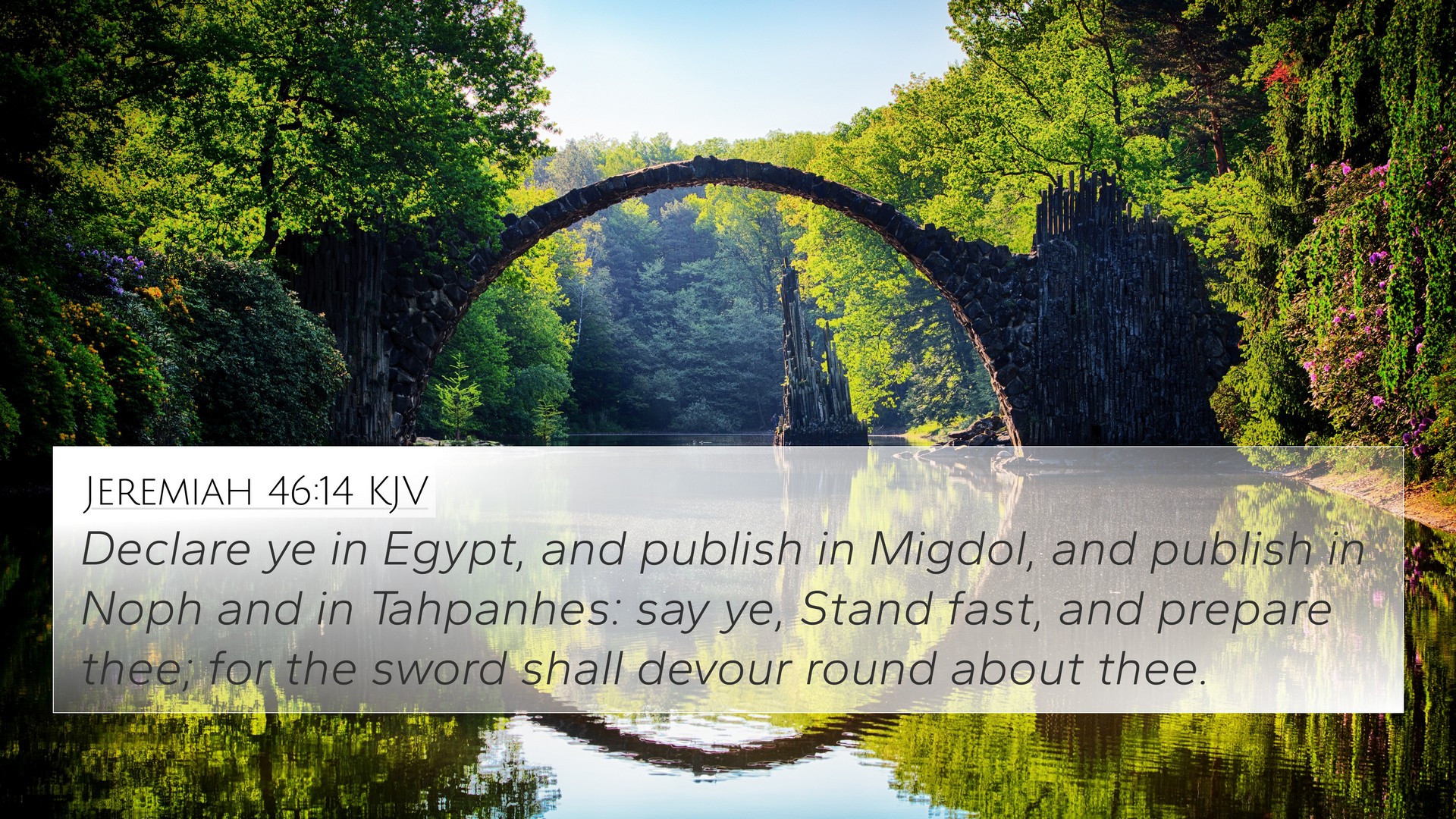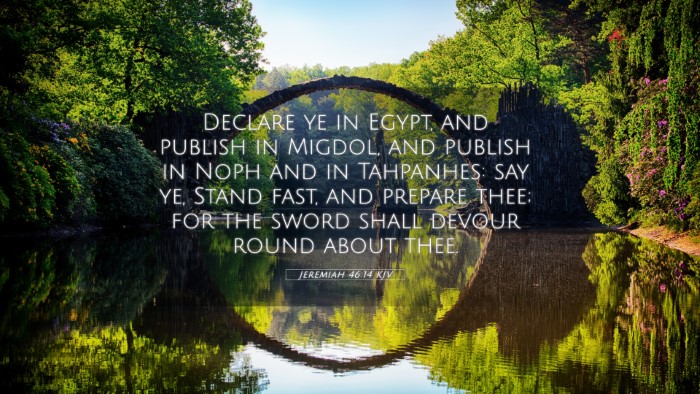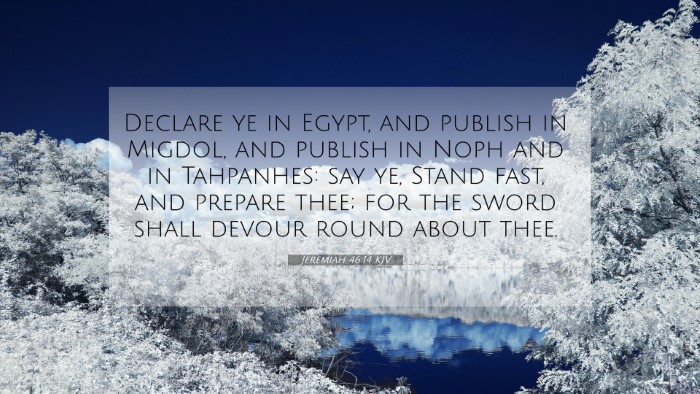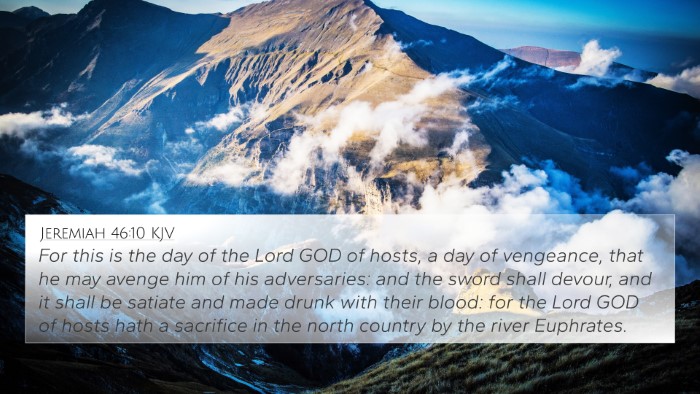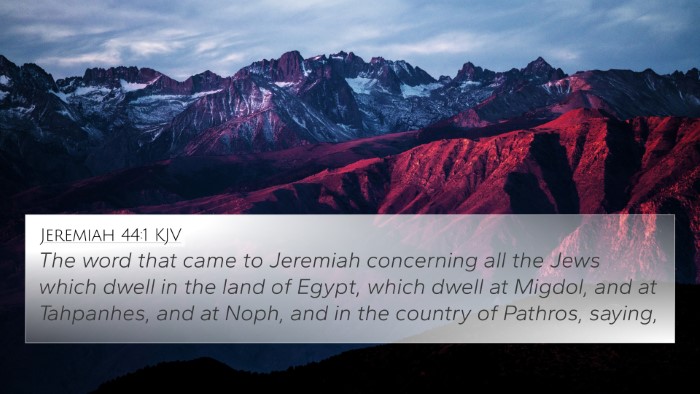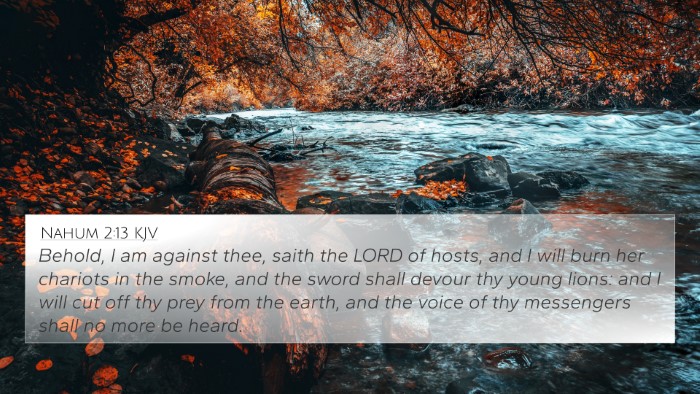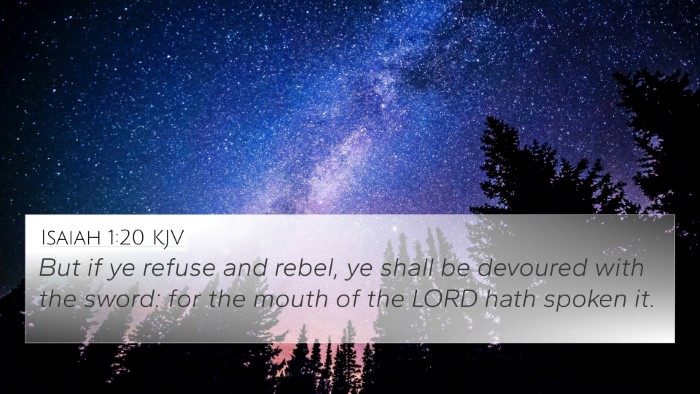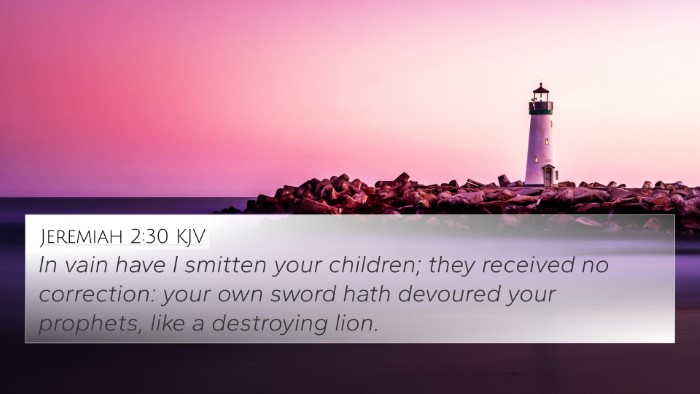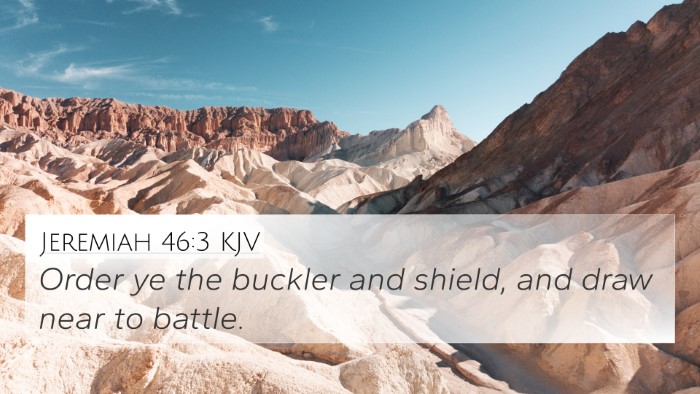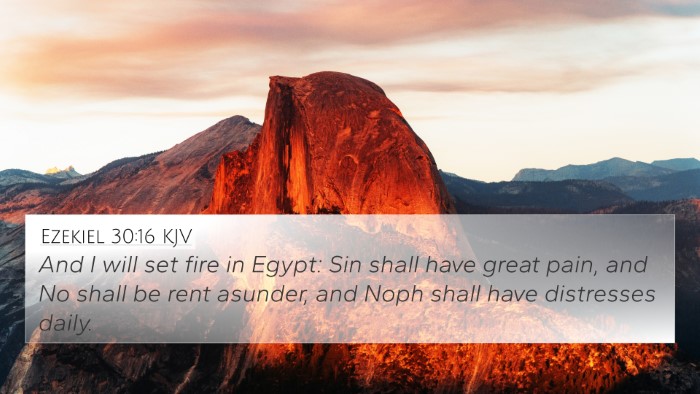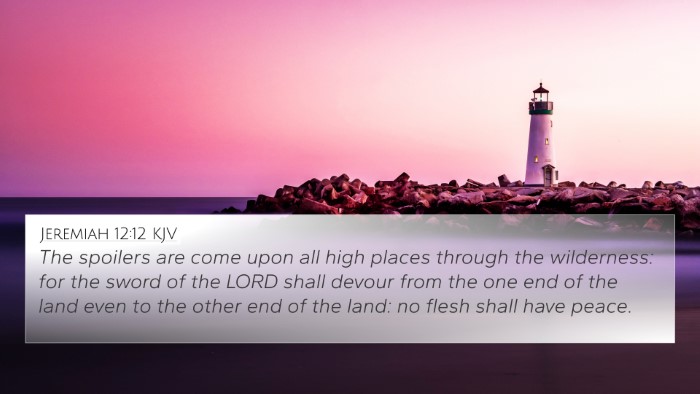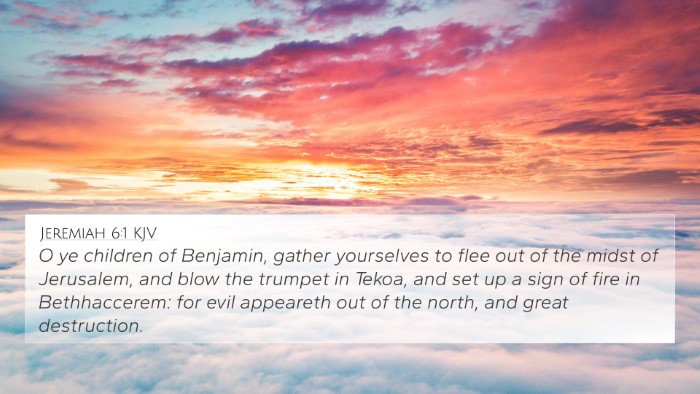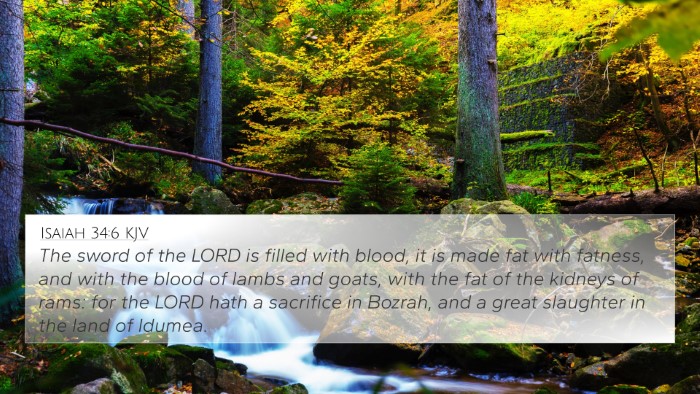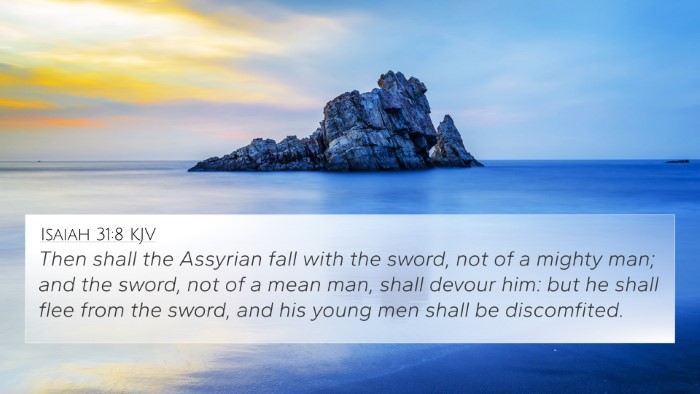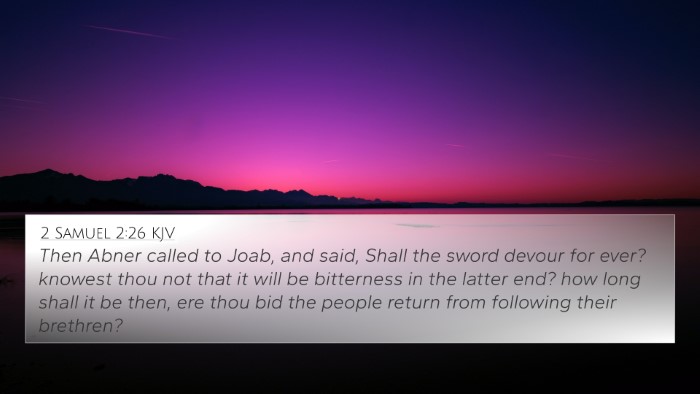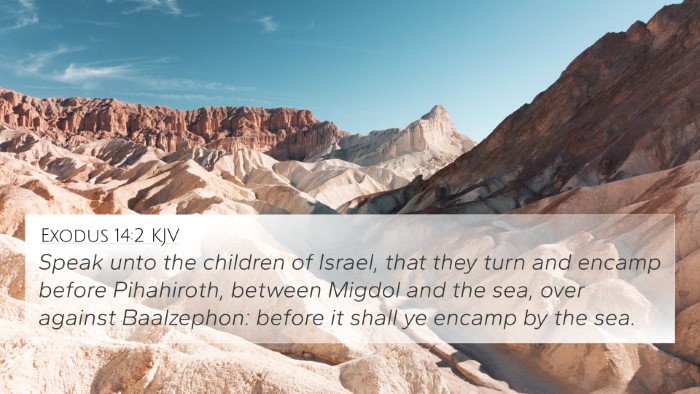Understanding Jeremiah 46:14
Jeremiah 46:14 states, "Declare ye this in Egypt, and publish it in Migdol, and publish it in Noph, and in Tahpanhes: say ye, Stand fast, and prepare thee; for the sword shall devour round about thee."
This verse serves as a prophetic warning directed towards Egypt regarding impending judgment. The call to declare and publish signifies the urgency and importance of the message. Below, we will explore its significance through insights drawn from public domain commentaries.
Contextual Overview
Jeremiah, as a prophet, was tasked with delivering God’s messages to His people, often warning them of the consequences of their actions. The specific focus on Egypt in this verse highlights the geopolitical tensions of the time.
Commentary Insights
-
Matthew Henry:
Matthew Henry emphasizes that this proclamation serves as a call to readiness. The "sword" here symbolizes impending destruction. The mention of specific locations indicates a systematic approach to spreading the warning throughout Egypt, suggesting that no one should be ignorant of the threat posed by Babylon.
-
Albert Barnes:
Albert Barnes points out that the term "Migdol" refers to a fortress, whereas "Noph" is identified with Memphis, a prominent city in Egypt. This geographical detail underscores the impact of the prophecy across varying regions, suggesting all of Egypt is at risk.
-
Adam Clarke:
Adam Clarke suggests that the repetition of "publish" highlights the thoroughness needed in announcing the impending doom. The emphasis on preparing for the destruction indicates a call for action rather than passive acknowledgment of the prophecy.
Thematic Connections
This verse displays rich thematic connections with other scriptures:
-
Ezekiel 30:4: Similar call to the nations regarding impending judgment.
-
Isaiah 19:1: A prophecy against Egypt, indicating that destruction will come swiftly.
-
Jeremiah 25:26: Talks about the kingdoms of the earth drinking from the cup of God’s wrath, which ties back to Jeremiah's warning in 46:14.
-
Jeremiah 1:10: God shows Jeremiah that he is to uproot and tear down, parallel to the destruction signified in this verse.
-
Amos 1:6: Comes as a warning to the nations, presenting a theme of divine justice that resonates through the passages.
-
Revelation 16:14: Talks about the spirits of demons going out to gather the kings for battle which draws parallels with the impending conflict.
-
Jeremiah 46:6: A prelude to the same warning, showing the inexorable approach of destruction.
Cross-Referencing Biblical Texts
The practice of cross-referencing Biblical texts helps to uncover deeper meanings and thematic links. Below are tools and methods that readers can utilize for effective cross-referencing:
- Bible Concordance: Utilize a concordance to look up key terms and find related verses.
- Bible Cross-Reference Guide: Engage with guides that specifically highlight connections between verses.
- Bible Reference Resources: Leverage various resources that provide comprehensive cross-referencing.
- How to Use Bible Cross-References: Familiarize yourself with techniques for identifying thematic links.
Conclusion
Jeremiah 46:14 serves as a significant prophetic warning not only for its immediate audience but also for contemporary readers. The emphasis on preparation in the face of impending danger is a timeless theme, applicable across generations. Through comparative Bible verse analysis and inter-biblical dialogue, one can appreciate the depth of understanding garnered from approaching scripture with a cross-referencing mindset.
Further Study Suggestions
For those interested in exploring further, consider studying the following areas:
- Comparative studies of prophetic books in the Old Testament.
- Thematic connections between the prophets and the teachings of the New Testament.
- Insights into how the concept of divine judgment is portrayed in various scriptures.
- How to find cross-references in the Bible relevant to personal or communal study.
